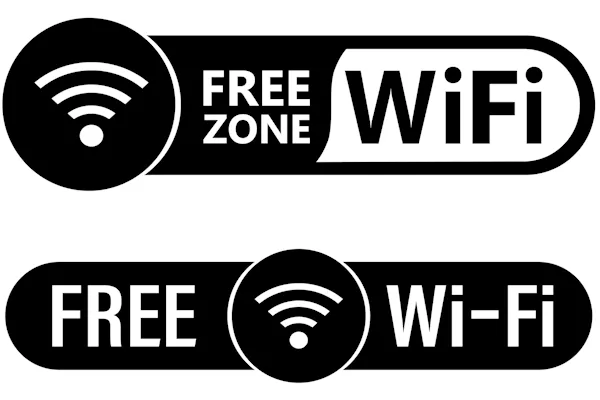The Blog
Access guides, checklists, and expert insights designed to make cybersecurity simple, practical, and effective for your business.
Stay ahead of threats, build client trust, and unlock peace of mind—at no cost.


Public WiFi
Why Public Wi-Fi Is a Hacker’s Playground
Introduction: Free Wi-Fi Isn’t Free
You’re in a coffee shop, checking emails while sipping a flat white.
The network’s open. The connection’s strong. Everything feels normal.
What you don’t realise is:
That free Wi-Fi might be the easiest way for a hacker to walk straight into your business.
In this blog, you’ll learn how attackers use public Wi-Fi to steal your data, spy on your activity, and compromise your devices — and what you can do to stay safe on the go.
What Makes Public Wi-Fi So Dangerous?
Public Wi-Fi networks — in cafes, hotels, airports, co-working spaces — are:
Open and unsecured
Used by dozens (or hundreds) of people
Easily manipulated by attackers
You have no idea who set up the router, who’s watching the traffic, or whether the connection is legitimate.
That’s what makes it a goldmine for cybercriminals.
4 Common Attacks on Public Wi-Fi
1. Man-in-the-Middle (MitM) Attacks
Hackers position themselves between your device and the internet.
They intercept everything — emails, logins, even payment info — without you knowing.
2. Evil Twin Networks
They set up a fake hotspot with a name like “CoffeeShop_WiFi.”
You connect, thinking it’s legit — but it routes through their laptop.
3. Session Hijacking
Attackers steal your session cookies and impersonate your login — giving them access to your accounts without needing your password.
4. Malware Distribution
Some hotspots inject malicious code into your device or trick you into downloading “updates” or apps that contain spyware or ransomware.
Real Story: A 20-Minute Coffee Break Gone Wrong
One of our clients was working remotely at a train station.
They connected to the free Wi-Fi, logged into their email, and unknowingly gave an attacker full access.
Within an hour:
Their email account was forwarding messages to a criminal inbox
Their login was used to access their CRM
Client contact details were stolen
The attack was silent — until clients began receiving phishing emails using their name.
7 Ways to Stay Safe on Public Wi-Fi
1. Use a VPN
A Virtual Private Network (VPN) encrypts your internet traffic — even on public networks.
It hides your data from prying eyes.
2. Avoid Accessing Sensitive Accounts
Don’t log in to banking, cloud dashboards, or admin panels when on public Wi-Fi.
If you must — use MFA, a VPN, and be cautious.
3. Turn Off File Sharing & Auto-Connect
Disable file sharing, AirDrop, and automatic network joining.
They can expose your device to nearby snoopers.
4. Use Mobile Data for Critical Tasks
If you need to access something sensitive — switch to your mobile network.
It’s far more secure.
5. Always Use HTTPS
Check for the lock icon in your browser.
Use a plugin like HTTPS Everywhere (or ensure your sites are HSTS-compliant).
6. Keep Software & Security Tools Updated
Outdated browsers and operating systems are easier to exploit.
7. Educate Your Team
Make sure employees understand the risks — and have a clear remote work policy that covers public Wi-Fi usage.
What to Include in Your Public Wi-Fi Policy
Create a simple, one-page guide that outlines:
When to use a VPN
Which apps or accounts should never be accessed
When to use mobile data instead
What to do if they think they’ve connected to a malicious network
What to Do If You Think You’ve Been Compromised on Public Wi-Fi
Disconnect immediately
Change your passwords — especially for email and cloud accounts
Run a malware/virus scan
Notify your security partner (or us!)
Monitor accounts for unauthorised activity

Innovation
Fresh, creative solutions.

Integrity
Honesty and transparency.

Excellence
Top-notch services.

FOLLOW US
Systems Secure Ltd
6 The Meadow, Copthorne, West Sussex. RH10 3RG
07588 455611
Company Registration: 7295869
COMPANY
CUSTOMER CARE
LEGAL
Copyright 2025. Systems Secure. All Rights Reserved.

